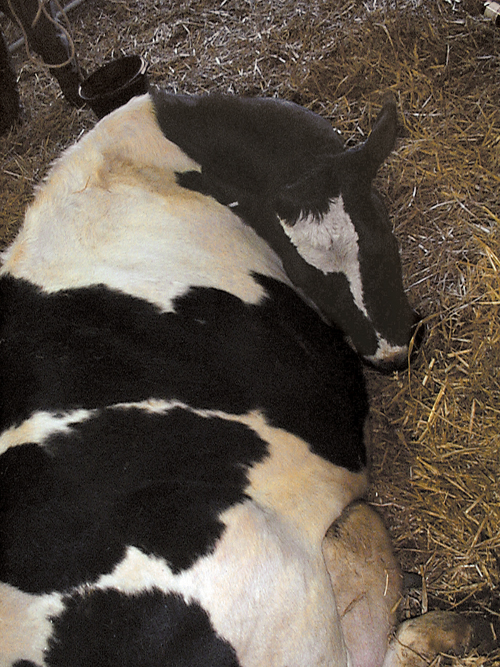Difference between revisions of "Cattle Medicine Q&A 11"
Ggaitskell (talk | contribs) (Created page with "{{Template:Manson}} centre|500px <br /> '''A 6-year-old Holstein cow, which calved 36 hr earlier, is presented in sternal recumbency, profound...") |
|||
| Line 39: | Line 39: | ||
{{#tag:imagemap|Image:Next Question.png{{!}}center{{!}}200px | {{#tag:imagemap|Image:Next Question.png{{!}}center{{!}}200px | ||
| − | rect 0 0 860 850 [[Cattle Medicine Q&A | + | rect 0 0 860 850 [[Cattle Medicine Q&A 1|Cattle Medicine Q&A 1]] |
desc none}} | desc none}} | ||
[[Category:Cattle Medicine Q&A]] | [[Category:Cattle Medicine Q&A]] | ||
Revision as of 11:40, 12 April 2011
| This question was provided by Manson Publishing as part of the OVAL Project. See more [[:Category:{{{book}}}|{{{book}}}]]. |
A 6-year-old Holstein cow, which calved 36 hr earlier, is presented in sternal recumbency, profoundly depressed, dehydrated, afebrile (38.5°C,101.3°F)), with toxic mucous membranes, an elevated heart rate of 96 beats per minute, and an increased respiratory rate (34 breaths per minute). The udder is soft but a pale, serum-like, secretion can be drawn from one quarter.
| Question | Answer | Article | |
| Which diseases would you consider? (Most likely first.) | The most likely conditions to consider include:
It may prove difficult to rule out the possible contribution of hypocalcaemia and many clinicians would elect to administer 400 mL of 40% calcium borogluconate slowly by the intravenous route while monitoring the heart rate. |
Link to Article | |
| What treatments would you administer? | Treatment of endotoxic shock (coliform mastitis) includes intravenous injection of a NSAID, repeated 12 hr later. |
[[|Link to Article]] | |
| What control measures could be adopted? |
|
[[|Link to Article]] | |
